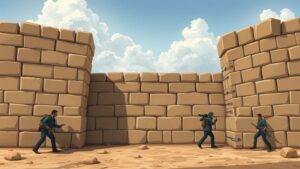Unearthing Arrowheads Along Ancient Battle Sites in Open Plains
Unearthing Arrowheads Along Ancient Battle Sites in Open Plains
The study of ancient battle sites provides invaluable insights into the historical contexts and cultural practices of indigenous populations. Among various artifacts discovered in these areas, arrowheads stand out as particularly significant. They not only reveal the technological capabilities of the people but also their subsistence patterns, warfare tactics, and social structures. This article delves into the methodologies employed in discovering arrowheads at ancient battle sites in open plains, exemplifying the importance of these artifacts in understanding human history.
The Historical Context of Arrowheads in Battle
Arrowheads have been used for millennia, with various materials such as stone, bone, and metal being employed over time. In many indigenous cultures, the design and crafting of arrowheads were critical skills that reflected both artistry and functional necessity. Numerous archaeological studies indicate that specific types of arrowheads correspond to different periods and regions, urging researchers to pay close attention to their morphology and material composition.
For example, the bifacial point, often identified in American Plains tribes, suggests a highly developed skill in flint knapping, showcasing sharp edges and a precise shape that improved hunting and warfare efficiency. In contrast, the smaller, triangular points found in later periods might imply a shift in hunting strategies or available resources. This form of analysis helps to establish timelines indicative of technological advancements and cultural shifts.
Archaeological Methodologies for Unearthing Arrowheads
Archaeologists employ several methodologies to locate and excavate arrowheads at ancient battle sites. These techniques often include survey strategies, excavation protocols, and advanced technologies. Each method is tailored to suit the unique characteristics of open plains environments.
- Systematic Surface Survey: This involves walking predetermined paths across a site to identify artifacts on the surface. Archaeologists often use tools like GPS to record locations accurately.
- Test Excavations: Small test pits are dug at various site locations to assess the depth and stratification of deposits. This method can uncover artifacts buried below the surface.
- Remote Sensing Technologies: Techniques such as Ground Penetrating Radar (GPR) and LiDAR allow researchers to visualize sub-surface features without intrusive excavation.
For example, a systematic surface survey conducted at the Battle of the Little Bighorn site led to the recovery of numerous arrowheads, each providing evidence of the combatants’ tactics and tool-making skills.
Interpreting Findings: Case Studies
Examining arrowheads found in battle sites offers a glimpse into the socio-political dynamics of the cultures involved. Plains Indians, for instance, utilized specific arrowhead styles suited for both hunting and warfare. Archaeological analysis of plains battle sites like the Sand Creek Massacre reveals layers of conflict and interactions between Native American tribes and European settlers during the 19th century.
In particular, a significant discovery at Sand Creek involved a cache of arrowheads alongside the remains of battle-damaged rifles, indicating a mixed-method warfare strategy. Such findings allow historians to reconstruct narratives surrounding these conflicts, enhancing our understanding of cultural exchanges and hostilities of the time.
Preservation and Ethical Considerations
The recovery of arrowheads from battle sites raises important ethical questions related to preservation and repatriation. Archaeologists are tasked with ensuring that artifacts are adequately documented and conserved to prevent loss of historical context. Plus, in cases involving indigenous lands, there is an imperative to involve local tribes in discussions around excavated materials.
Policy frameworks established by organizations like the National Park Service in the United States advocate for comprehensive strategies that respect both archaeological integrity and the cultural beliefs of indigenous peoples. For example, consultation with Native American tribes has resulted in agreements over the excavation practices at sacred sites, ensuring that they honor the spiritual significance of the locations.
Conclusion: The Wider Implications of Arrowhead Recovery
The study of arrowheads found at ancient battle sites in open plains reveals not just the technological prowess of ancestral populations but also their social structures and relationships with the environment. As archaeologists continue to unearth these artifacts, they piece together narratives that inform contemporary understandings of history.
In practical terms, cooperating with cultural stakeholders and employing advanced archaeological methods will yield the best results in uncovering these historic treasures. These endeavors not only enrich academic knowledge but also serve as a bridge between past and present, fostering a dialogue that recognizes the significance of history in shaping current societal identities.
Ultimately, the unearthing of arrowheads serves as both an archaeological endeavor and a pathway to understanding the multi-layered tapestry of human experience across time and space.



